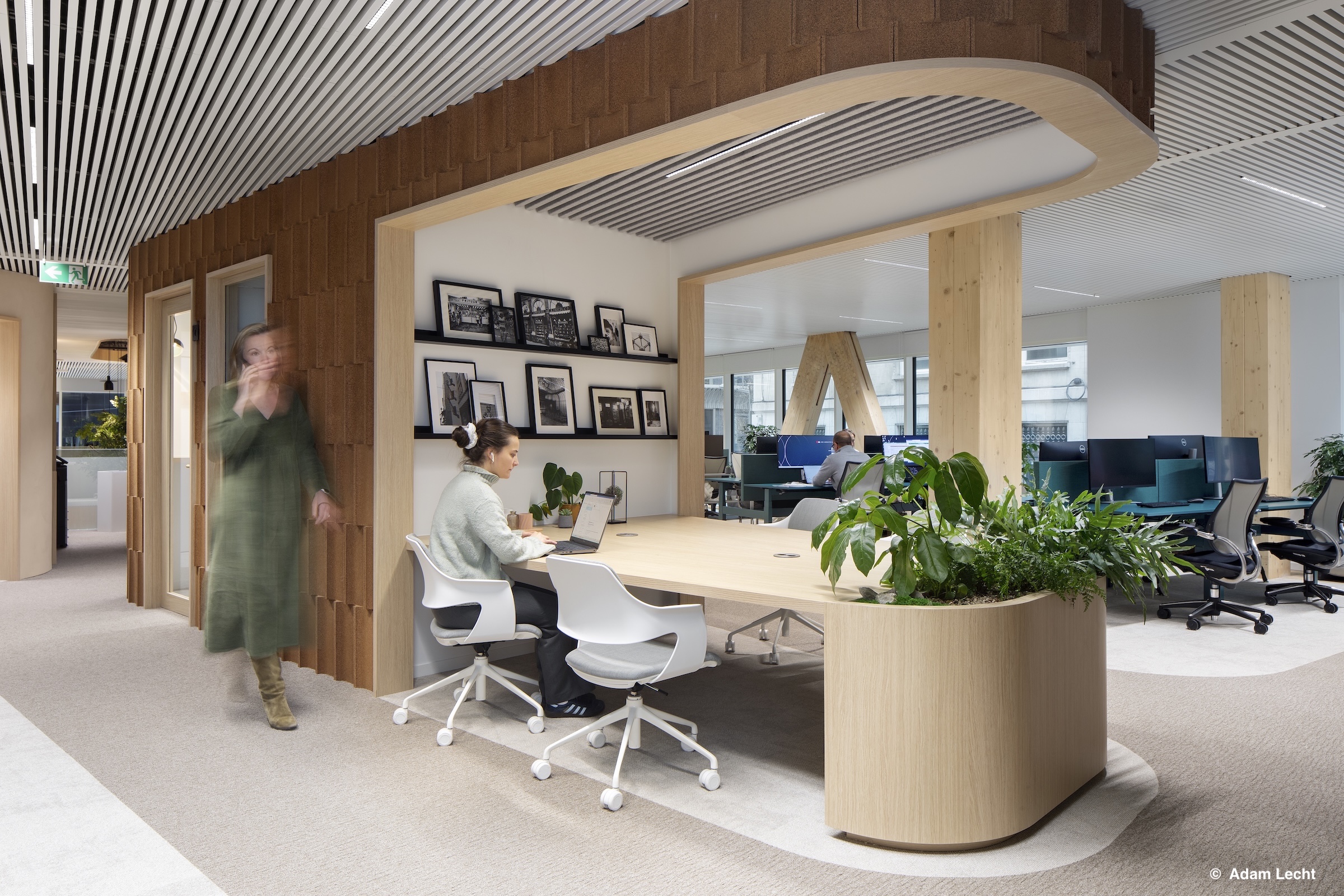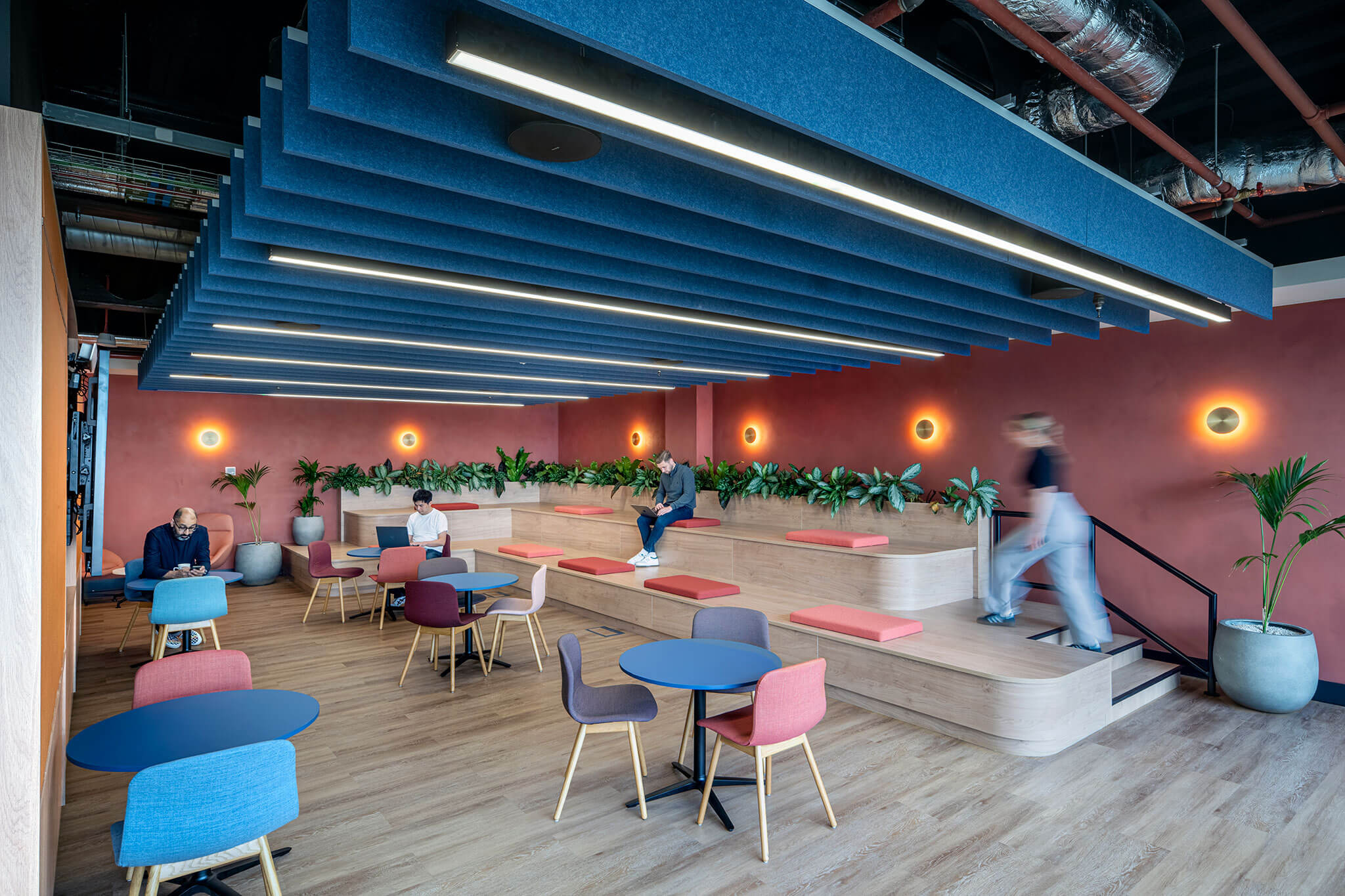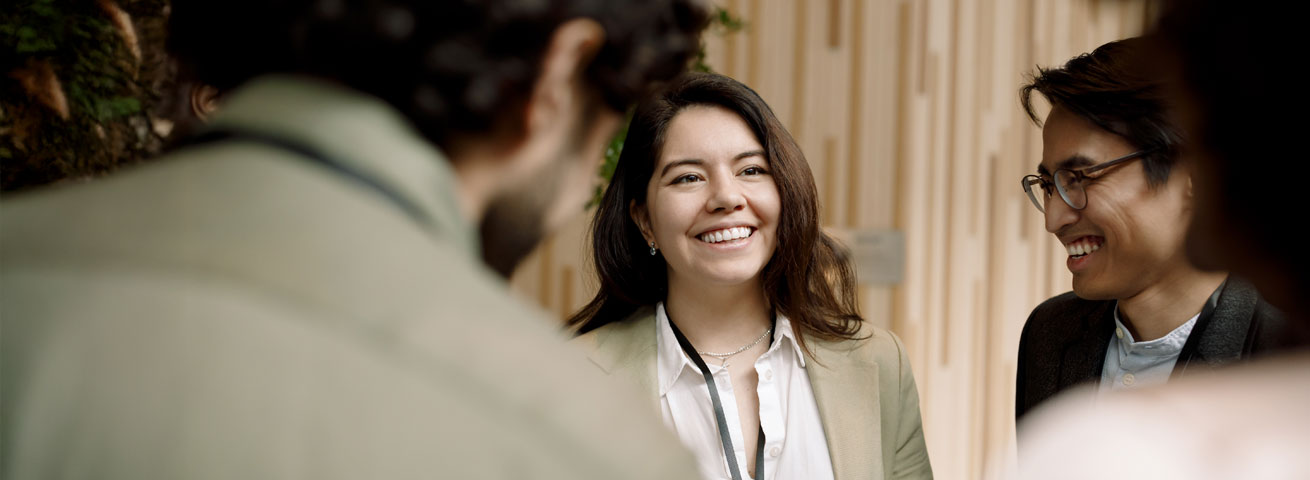A sustainable office that minimises its impact on the planet offers immense benefits for employers and employees – and it starts with design.
As countries strive to meet carbon reduction targets, more corporations are pledging to achieve net zero emissions – and a low-carbon, earth-friendly workplace is becoming a vital business priority.
According to the UN Global Compact, companies that make climate consciousness part of their business can increase their sales by as much as 20%, and decrease employee turnover up to 50% (Business Leadership Brief for Healthy Planet, Healthy People). Green practices are increasingly valued by consumers and investors, and for employees, sustainable workspaces have been shown to enhance wellbeing and boost productivity.
While overall carbon impact largely depends on external building features, a low-carbon interior fit-out significantly improves an office’s lifetime environmental impact, not only by reducing waste during the construction phase, but through design that minimises emissions in operation and makes use of furniture and materials from local, sustainable sources.
“Sustainable fit-outs are a process to create beautiful, functional spaces that minimise the impact on the environment,” says Silvia Aranda, Design Operations Director, EMEA at Tétris. “With the commitments made by countries and corporates, this approach has become more normalised and therefore affordable for everyone.”
Low energy by design
For Interface, a pioneer in carbon-neutral flooring, its interior fit-out reflected its business aims and philosophy. The biophilia-centred design reduces the energy required for lighting and ventilation by prioritising natural light and green walls that filter the air, with movable glass partitions that ensure daylight reaches through the entire space.
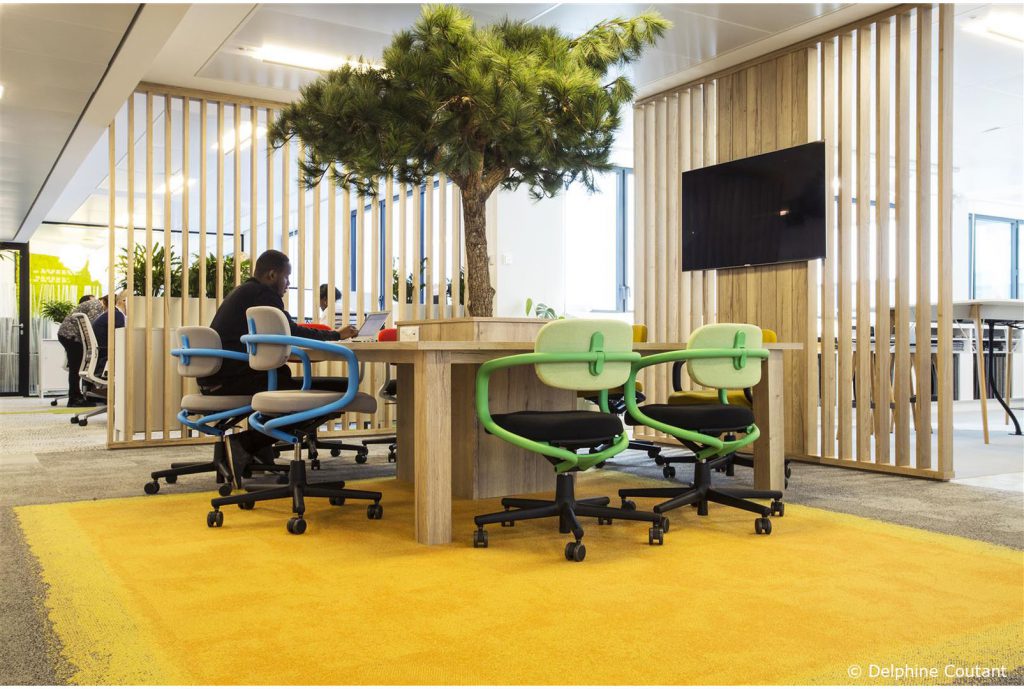
“Energy efficiency, whether it’s through daylight harvesting or efficient office systems, is a key factor in creating a net zero design,” says Aranda.
As in the Interface office, which received WELL Gold certification, an accreditation for spaces that enhance wellbeing, designs that consider employee wellness and convenience are likely to slash emissions.
For example, floorplans configured with desks at the perimeter can maximise daylight for all staff and reduce the need for artificial lighting.
In hot climates, desking could be placed further from the façade, while window treatments can reduce heat and glare to dial back reliance on air-conditioning. Across the board, energy-saving LEDs optimise electricity use while easy-to-access switches and motion sensors ensure lights are off in empty zones.
Consuming less, and keeping it local
Procuring recycled or salvaged materials that minimise the consumption of resources is equally crucial in low-carbon design.
Take the JLL Manchester office – along with smart sensors that track the office climate to optimise energy use, the low-carbon, low-waste fit-out relies on the use of recycled materials. Its kitchen and reception countertops are made of recycled yoghurt pots, while floor and ceiling coverings comprise recycled plastic. Instead of new chairs, refurbished seating reduced carbon emissions by 61% and water use by 75%.
“Reusing materials helps avoid producing unnecessary waste. Where clients already have good furniture, it can be included in their new designs,” says Joanna Gajewska-Sokołowska, EMEA Deputy Chief Operating Officer at Tétris.
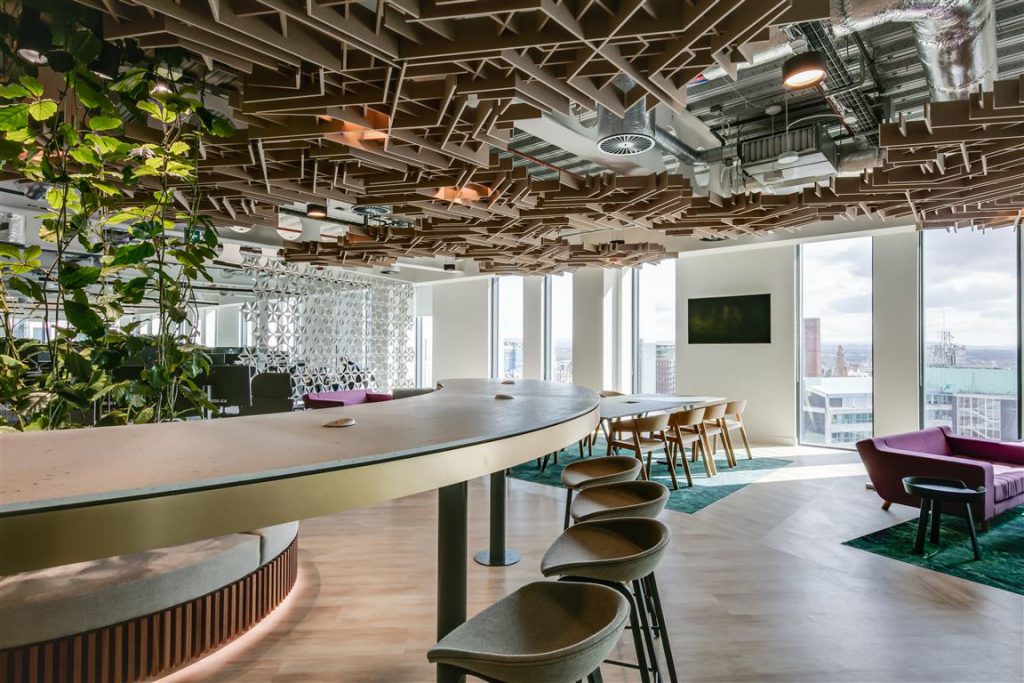
Suppliers that check off against sustainability criteria streamline the process of sourcing low-impact materials and furnishings, notes Gajewska-Sokołowska, while working with local suppliers not only reduces the emissions associated with transport, but can create a positive impact in the local economy
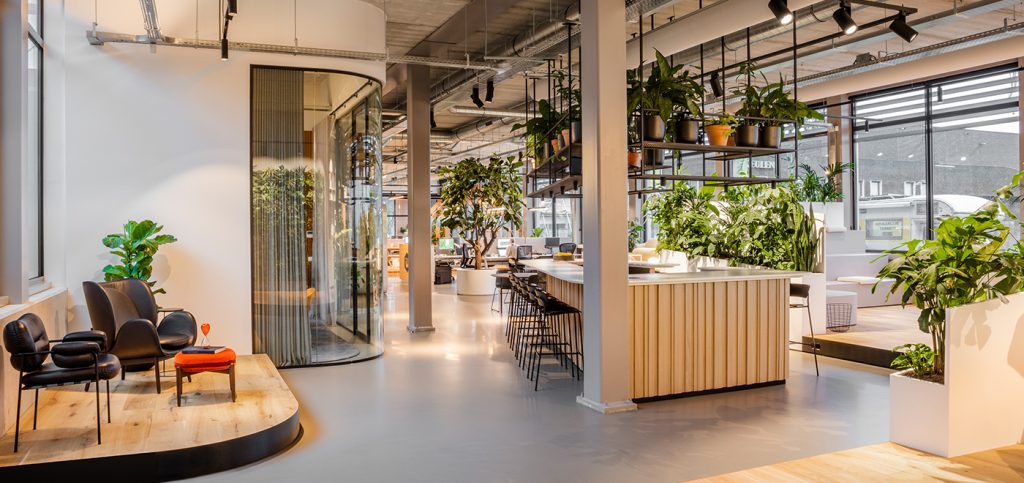
In Amsterdam, the InteriorWorks office is fitted entirely with regained materials, from joinery to glass and wood partitions, with some elements sourced from the industrial neighbourhood, others from within a 100-kilometre radius. An edible garden contributes to employee dining, and throughout, trees and greenery maintain air quality and evoke the sense of parkland within the workspace.
“A net zero design incorporates as much of the outside landscape into the interior as possible, choosing materials that utilise and preserve the local land and culture,” Aranda says.
Say no to the landfill
With more companies investing in a circular economy, there is a growing range of furniture and finishes that create little or no waste, absorbing what’s generated back into their production cycles – and reducing what needs to be sent to the landfill when companies refurbish or when materials wear out.
Flooring by Interface, for example, can be returned to the manufacturer at the end of a life cycle to be recycled into new products. Furniture company Steelcase uses scrap fabric from its manufacturing facilities to make upholstery, and many of its pieces contain up to 95% recyclable content.
Setting a formal system for waste management throughout an interior fit-out – including what’s generated in the supply chain – helps with the effective reuse of materials, whether they’re used in the new design, donated or sent on for recycling.
“When you design the workplace with circularity in mind, you are more likely to use less, measure exactly what you need, and reduce waste,” says Gajewska-Sokołowska. “A zero-waste project should be the ultimate goal.”
The net zero journey
Creating a zero-carbon workplace starts long before anyone walks through the office doors.
“You cannot achieve net-zero as an afterthought – it has to be a mandate from the beginning that drives every single design and build decision,” says Aranda.
Nor does one size fit all, she notes. Strategies to reduce the emissions of a fit-out are unique to a particular space and its tenant’s operations.
“The end result is a functional, accessible and stylised space designed specifically for low maintenance and minimal operating costs, and for the client’s goals,” Aranda says. “In this way, we create holistic spaces that inspire, are differentiated in the market, and most importantly, can thrive for generations to come.”

Tétris can help you with the fit-out of your green office.
